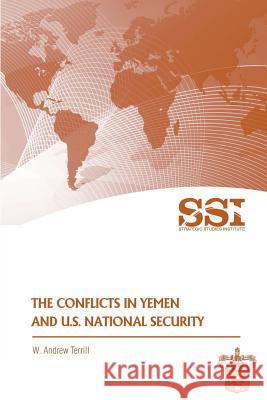The Conflicts in Yemen and U.S. National Security » książka
The Conflicts in Yemen and U.S. National Security
ISBN-13: 9781477626597 / Angielski / Miękka / 2012 / 118 str.
The political situation within Yemen has catapulted to the top tier of U.S. national security concerns over the last several years as it has become more directly linked to both the problem of international terrorism and the need for future stability in the Arabian Peninsula. On the terrorism front, the December 25, 2009, attempted bombing of a U.S. passenger aircraft in Detroit, Michigan, by an individual trained by Yemeni terrorists was a particularly clear warning to the United States about the dangers of neglecting this geopolitically important country. Yet, this near catastrophe also underscored the need for a careful consideration of U.S. policies regarding Yemen. This requirement may be especially clear when one considers the chain of events that might have been set off had there been a successful terrorist strike in Detroit in which hundreds of Americans were killed. Apart from the human cost of such a tragedy, the U.S. leadership would have been under enormous pressure to respond in a way consistent with the level of public outrage associated with the event. Public pressure might well have existed for military intervention in Yemen with U.S. ground combat troops. Such an intervention is something that the present work insists would infuriate virtually the entire Yemeni population, regardless of the objective merits of the U.S. case for the offensive use of U.S. ground combat forces. In approaching this analysis, Dr. W. Andrew Terrill quotes then Central Command Commander General David Petraeus in an April 2009 statement that the al-Qaeda threat across the Middle East is weakening except in Yemen. In Yemen, the threat still seems to be growing well over a year following this prescient observation. Additionally, while the terrorism threat alone requires an intensive U.S. interest in Yemen, it is not the only reason why an understanding of current Yemeni issues is important for the U.S. national interest. An intermittent insurgency by Zaydi rebels in northern Yemen and an expanding secessionist movement in southern Yemen are also serious problems which may have important implications for the wider Arabian Peninsula. Unfortunately, while these problems are straightforward, their solutions are not. Dr. Terrill also points out how deeply distrustful most Yemenis are of any foreign military presence on their soil and how quickly clerical leadership in Yemen will characterize any U.S. bases in Yemen as colonialism, which the population is required to resist by their religion. The U.S. challenge is therefore to help Yemen destroy al-Qaeda without deploying large numbers of U.S. troops in that country, while encouraging a peaceful and lasting resolution of the government's problems with the northern Zaydi tribesmen and the "Southern Movement," which calls for an independent state in the south. All important U.S. policies on Yemen will have to be coordinated with Saudi Arabia, which is Yemen's largest aid donor and plays a major role in Yemen's politics. The Strategic Studies Institute is pleased to offer this monograph as a contribution to the national security debate on this important subject as our nation continues to grapple with a variety of problems associated with the future of the Middle East and the ongoing struggle against al-Qaeda. This analysis should be especially useful to U.S. strategic leaders and intelligence professionals as they seek to address the complicated interplay of factors related to regional security issues, fighting terrorism, and the support of local allies. This work may also benefit those seeking a greater understanding of long-range issues of Middle Eastern and global security. It is hoped that this work will be of benefit to officers of all services, as well as other U.S. Government officials involved in military and security assistance planning.
Zawartość książki może nie spełniać oczekiwań – reklamacje nie obejmują treści, która mogła nie być redakcyjnie ani merytorycznie opracowana.











